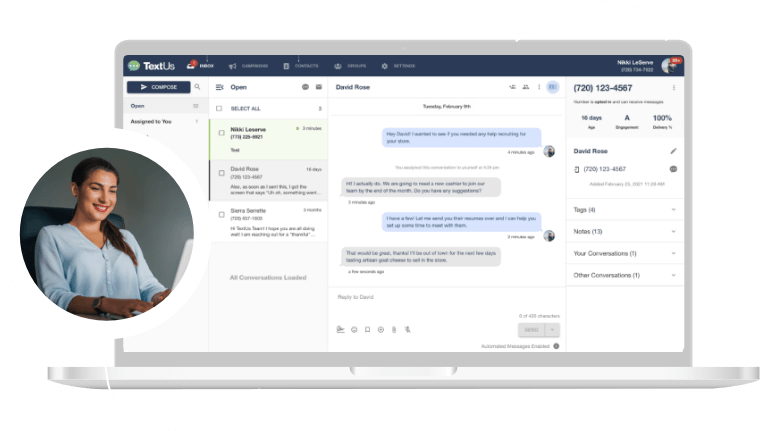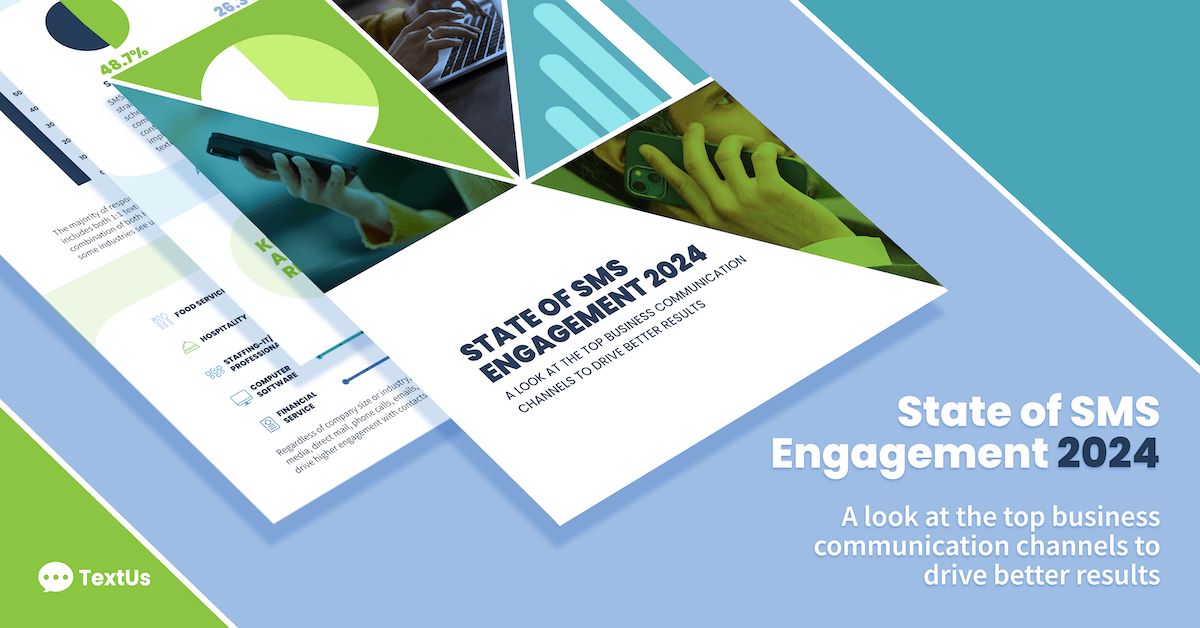3 Questions to Ask Yourself Before You Send That Business Text Message in 2020

2020 will have its own chapter in the history books. From an economy-stopping pandemic that has taken thousands of lives to widespread civil unrest that has thrown the spotlight on deep fissures in the country, to say that it’s no longer “business as usual” is a huge understatement.
You might looking to build relationships in some pretty unpredictable field conditions. You’re reaching out to people who are more likely than ever to be going through tough times, if not outright crises.
And you’re also reaching out to people who often need to connect more. With record unemployment levels and a whole lot of really difficult conversations going on right now, your contacts may have an even greater need for connection, resources, and support.
We’ve thought a lot about what’s worked for us and our clients in the past three months. Because text messaging is quick, unobtrusive, and the way most contacts want to communicate, it’s been more helpful than ever in building relationships.
But like every other form of outreach right now, it requires a bit of extra thought and care to make sure your message lands. So, here are a few questions to ask before you send that business text message.
Should you text at all?
Two things you should ask before reaching out to your contacts right now:
- Is this message helpful to my audience? (Do they need to hear from me?)
- Is this message timely for my audience? (Do they need to hear from me right now?)
If the answer to any of these questions is no, you probably don’t want to send that text.
The success of building any relationship often comes down to timing. You likely wouldn’t ask your friend for a favor the day her dog died or as your boss for a raise the day your organization announced dwindling profits. In the same way, you want to be sensitive about what else may be going on for your contacts before sending that message.
For example, if your client’s city just opened businesses back up and released stay-at-home orders, you may not want to send that message about remote work resources. And if your customer just went through layoffs, you may want to hold back on that request to up their annual contract.
Be as thoughtful about when you send your message as you are about what your message says.
Do you have something meaningful to offer?
I’ll be blunt: your contacts don’t care about your new feature, your company news, or even your job opening if you don’t make it clear, from the get-go, how your outreach will help them.
In the past, self-focused messages might have gotten you a curt unsubscribe or just no responses at all. Now, an off-tone message is more likely to be met with irritation, frustration, or even public complaints.
For example, at the beginning of the outbreak, many companies were met with resistance online for sending strange COVID-19 emails to their subscribers that positioned their company as unlikely virus-fighters or overly concerned friends.
What these messages had in common was they attempted to put the company and the company’s actions front and center during the onset of a global pandemic. If they prioritized the contacts’ needs, they likely would’ve provided more substantive info, like links to the CDC or WHO, or would not have reached out at all.
At a time when people’s resources — their time, their money, their attention — may be more scarce than ever, starting with how you can help doesn’t just make good business sense. It’s the right thing to do.
The best way to help might not be obvious. You may need to survey your audience and have more open-ended conversations with current customers to really dig into the often-changing needs of your contacts. But once you narrow in on a need that you can meet, this is where those relationship-building conversations can begin.
Here are some example templates to help you start out on the right foot:
Hi {First}, sharing this forecasting tool with you because a few leaders in staffing firms like yours have found it helpful for anticipating client need. –{Sender}
Hi {First}, since you’re working remotely for the first time, I thought you might find our work-from-home guide helpful — #45 and #53 made me think of you. Let me know if you’d like to chat about it. –{Sender}
Is automation making you look insensitive?
Recently, a beloved bookstore in Portland, Oregon, accidentally sent out a social media message at the beginning of the recent protests in the city. The message had been automated to go out before the protests began, but emerging in the midst of the city’s unrest, the bookstore came off as tone-deaf and out of touch to its fans, many of whom responded to the post with hurt and outrage.
Normally, we are huge proponents of automation. It can help you start hundreds of conversations with your audience, quickly, and it takes away the busywork of outreach so your team can focus on real conversations.
But, right now, with emotions running high and so many things changing on a daily basis, automated messages can quickly become time-deaf, irrelevant, or even offensive. For these reasons, with the exception of neutral outreach like appointment setting, we recommend taking a break from your regularly scheduled automation until you can be sure that all your outreach is timely and meaningful.
But, when you go for automating, here are some must-follow guidelines.
- Regularly audit your scheduled messages to make sure they’re still relevant to your audience.
- Use personalized automation to start 1:1 conversations with large groups.
- Stick to targeted manual outreach to individualize the sales and recruiting process and deepen relationships.
- Make sure your ongoing automated messages are as evergreen as possible, free from references to time-sensitive events and activities.

Get a TextUs Demo
Learn how thousands of businesses use TextUs everyday to communicate in real-time.

